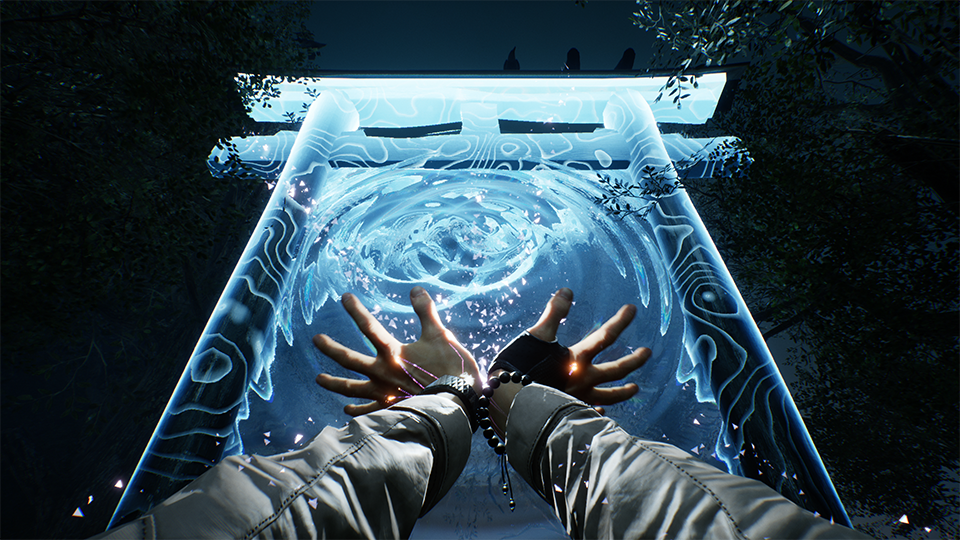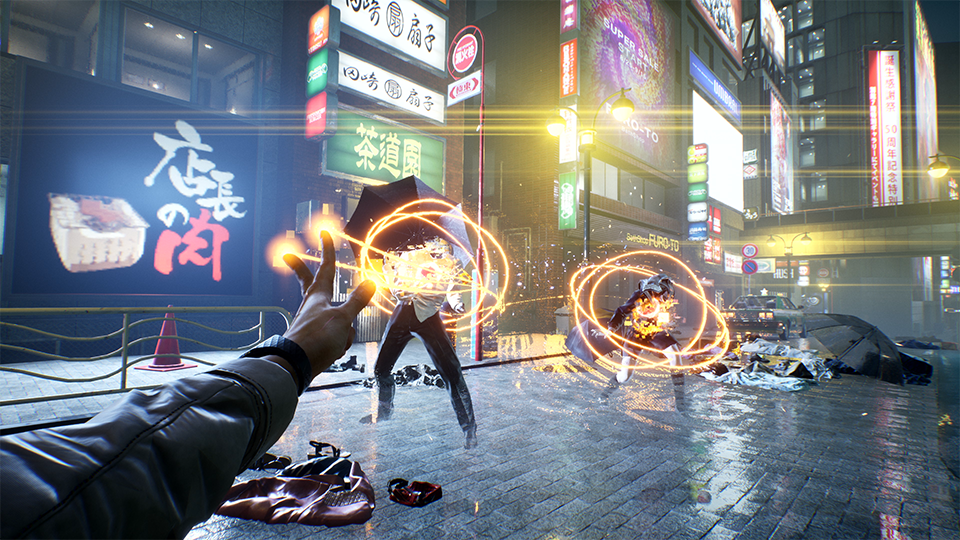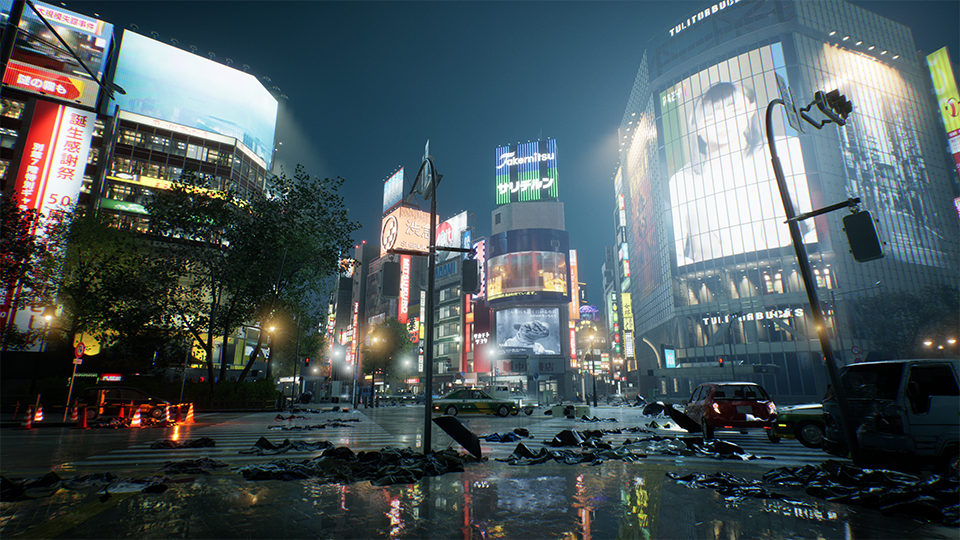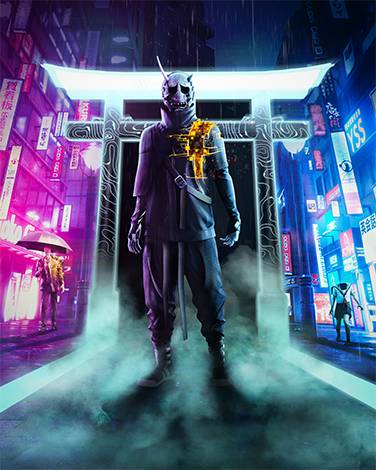[UWSL]Tokyo, 2021.[/UWSL]
A cataclysmic event has struck the city, causing the disappearance of 99% of its population. In the wake of this inexplicable vanishing, a shadowy and nefarious group has set up shop within its boundaries and spirits wander the now-quiet streets with unknown intent. Armed with mysterious but powerful supernatural abilities, it falls to you to purge the spirits, solve the mystery behind the disappearances, and save Tokyo.
Ghostwire: Tokyo is coming to consoles exclusively for the PlayStation 5, and will also be available on PC when it launches in 2021.
[UWSL]
IN FIGHTING SHAPE[/UWSL]
Those who are familiar with Shinji Mikami and Tango Gameworks are familiar with their strong pedigree in horror. But Ghostwire is
not horror. Though there is an eerie element to the world, this is the studio’s first foray into the action-adventure sphere. They are taking their strengths in building a tense atmosphere and unforgettable creatures and bringing them into something completely new and different. Armed with a bevy of upgradeable, supernatural elemental abilities, you will purge Tokyo of the spirits roaming its streets and return the city to its former glory.
Assisting them in creating a more action-oriented game is Shinichiro Hara, who worked on the push-forward combat and Glory Kill system in DOOM (2016), and is now the Combat Director on Ghostwire: Tokyo. Hara and the combat team at Tango have created an intricate, combo-based system that utilizes movements inspired by traditional Kuji-kiri hand gestures. The result is combat that is unlike anything you’ve experienced before, enhanced further by the PlayStation 5 controller’s new haptic feedback and adaptive triggers, which make each encounter feel as unique as it looks.

“We want the player to feel like a badass, spell-casting, high-tech ninja exorcist defeating countless evil spirits,” says Hara. “In order to achieve this, we chose intricate, deliberate hand gestures as the primary weapons, instead of simple guns. Unlike guns, our gestures allow us to put a lot more movement and personality into the player action as the player’s hands are organic extensions of the character. This system is unique to Ghostwire. It’s karate meets magic. Often, magic casters have this image of not being physically strong. That isn’t the case with Ghostwire. In Ghostwire, you’re casting magic with martial arts movements.”
And because Hara is known for his work on Glory Kills in DOOM, he brought his expertise on contextual takedown moves to Ghostwire: Tokyo. “Ghostwire has these takedown moves that you can initiate from a distance,” he says. “In most games, players can only initiate the takedowns within close proximity to the enemies. In Ghostwire, you can take down enemies from both close proximity as well as from a distance. When the Visitors are vulnerable and their ‘core’ is exposed, you can pull out the core with spiritual wires. You can also use these wires to chain-kill multiple enemies.”

Remember: Know thy enemy. Be sure to pay close attention to every Visitor you come across. You may notice they have strengths and weaknesses – specific types of attacks they might be vulnerable or resilient to. Mind their unique abilities as well or you might find yourself in trouble, surrounded by agile Schoolers (the headless schoolgirls) or falling prey to the barricades created by the Shiromuku (the towering figure dressed like a traditional bride).
As Hara explains, the team at Tango Gameworks designed their enemies based on traditional Japanese ghost stories and legends. “But we added a modern twist to them. For example, instead of a faceless ghost in a traditional kimono, we have a faceless ghost that is dressed like a Japanese businessman. They all represent different aspects of life or humanity. In general, the enemies in Ghostwire: Tokyo are not only scary, but also very creepy, and this is essential to the Japanese ghosts and monsters. These enemies play a huge role in constructing the world of Ghostwire and giving players the feeling that you are fighting against evil Japanese spirits from folklore in modern Tokyo.”
[UWSL]
EXPLORE TOKYO[/UWSL]
Tokyo is Tango’s home, and they wanted to bring their own unique vision and twist to the city they love. As you saw in the gameplay trailer, Tokyo has been lovingly rendered in Ghostwire, and features locations players may already be familiar with, but depicted in new and different (and maybe a tad spooky) ways. And thanks to the incredible visual fidelity offered by the PlayStation 5, as well as the 3D audio and haptic feedback, you will experience every inch of Ghostwire’s world as though you were actually in it.
“I’m looking forward to players experiencing the world we’ve created,” says Game Director Kenji Kimura. “The Tokyo in Ghostwire has suffered from a strange supernatural event – one that has led to the disappearance of most of its population – and it’s no longer the Tokyo you may already know. The streets are quiet. Spirits wander the living world. Walking through a tight alleyway might give you a view into the surreal ‘other side.’ It’s a very different way of seeing the city.”

For Kimura and the rest of the Tango team, it was important for Ghostwire to lean into what Tokyo is renowned for: mixing the old and the new in breathtaking and surprising ways. “Tokyo is a city that mixes the new and modern – technology and skyscrapers – with old traditions,” he explains. “You’re be able to go into a beautiful, brightly lit, contemporary building and go all the way up to the rooftop for a serene view of the city, or you can wander the streets and find an old-fashioned bath house that might sit right between buildings and modern architecture. We hope players will enjoy being able to walk around and explore and see for themselves what other kinds of places exist in this great metropolis.”









